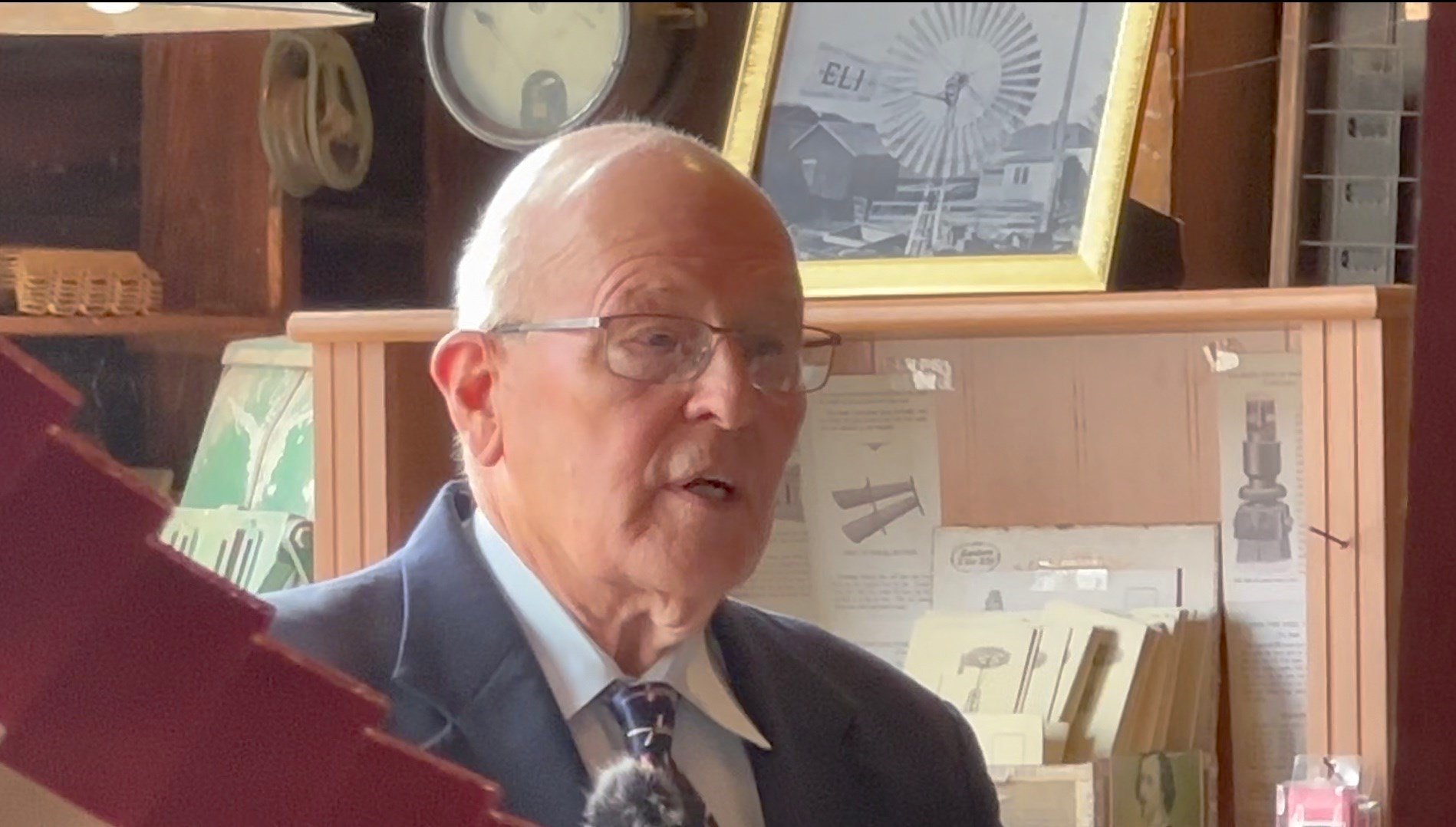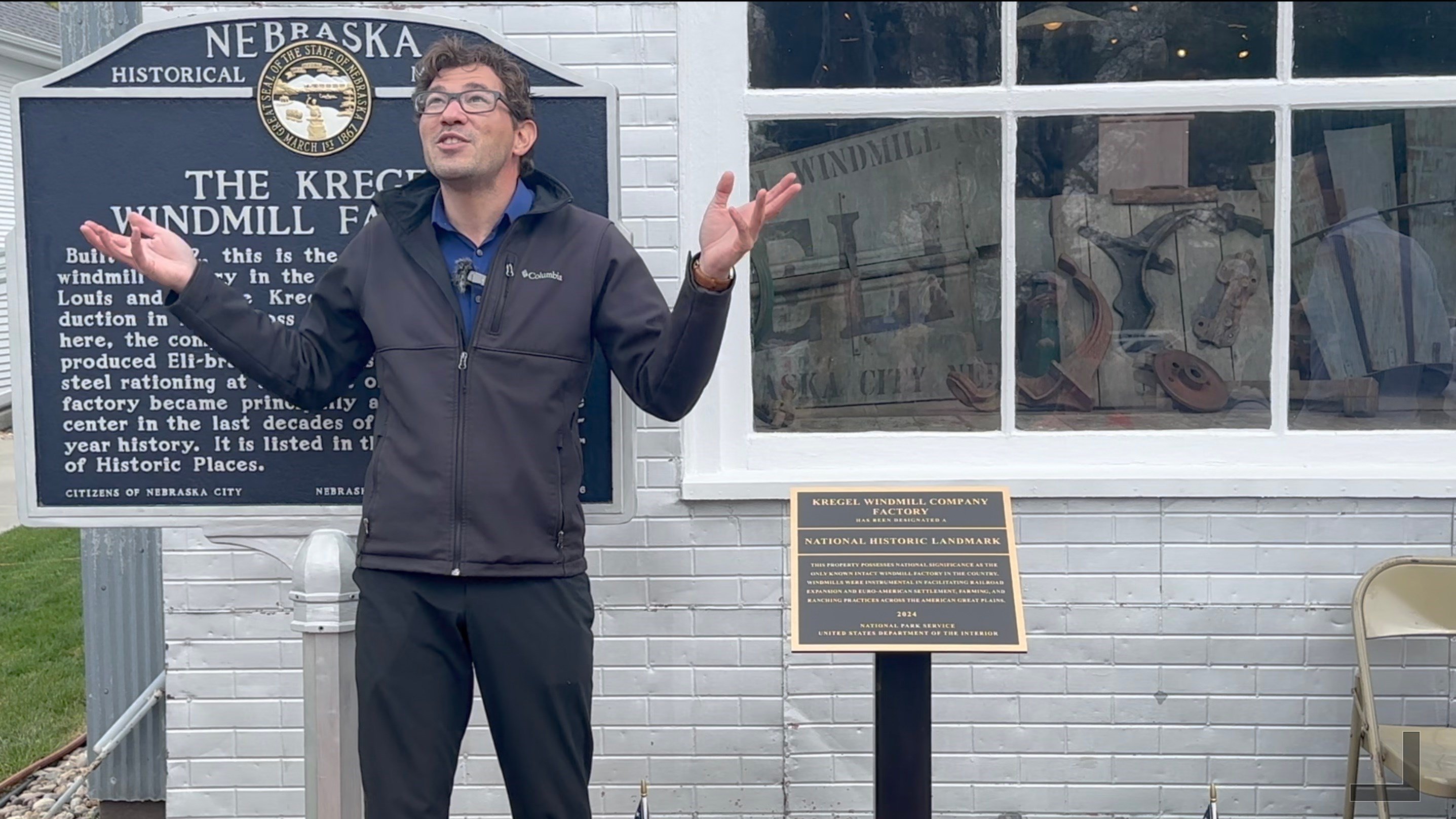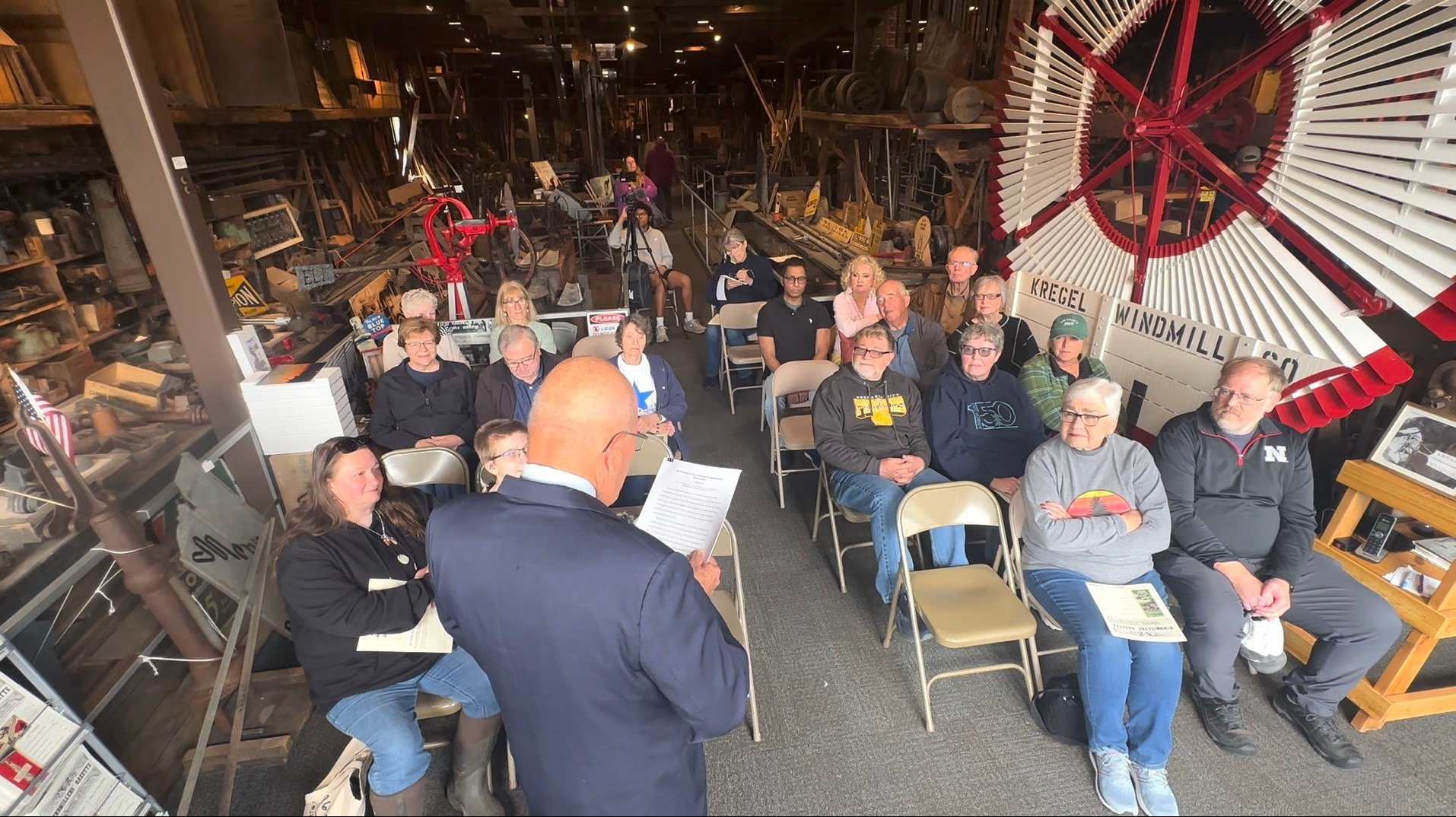National Historic Landmark sets Kregel Windmill Factory apart
NEBRASKA CITY- Nancy Hoch had the vision for the derelict building and Isaiah Yott had the meticulous stamina to organize the paperwork needed for a national historic landmark, but Hoch herself said it was the adept voice of T. Lindsay Baker that made the wheels of preservation turn for America’s last intact windmill factory.
Baker: “The Kregel Windmill Factory is indeed the last, preserved original windmill factory in the United States.”

Architect Jerry Berggren recalled that Hoch contacted him with a complicated vision of the Kregel Windmill Factory Museum, but no financial backing.
Berggren: “She managed to get the records preserved because she was very much afraid this building was going to come down from some developer or whatever and it didn’t. Thank God.”
He said the National Park Service made a HAER report, the Historic American Engineer Record, and Ernie Weyeneth of the Steinhart Foundation provided the financial footing.
Berggren: “I remember the first board meeting – what’s this going to be like? How have you done this before? I said we’ve never done anything like this. We’ve never found an intact building that needed to be preserved without disturbing anything.”

It was the voice of Baker, an American West historian and researcher of wind power in the United States, that said the grit on the floor and the metal shavings on the machinery all should stay. It was Baker who recruited the curator of industry for the Henry Ford Museum John Bowditch for an eight-minute videotape with the machinery running.
Nebraska City knife maker Sid Suedmeier was among the first board members. He and former Naval technician Ernie Rink re-aligned the main power shaft that extended the width of the factory.
Suedmeier: “It was a very greasy, dirty job, but it was enjoyable to see it all run when we got it done.”
It was Baker’s voice that validated the ingenuity and adaptability of the enterprise started by the Kregel family in 1879. He recognized the agricultural boom years at the turn of the century and the heart-wrenching struggle for business survival during the Great Depression. The Kregels adapted to the rationing of World War II and Arthur Kregel finished with pump repair late into the 1980s.
For the factory to survive any further, Baker said, it was necessary to convince others that it was significant.
Baker: “It’s exceedingly exciting to go to place that, for one reason or another, is a time capsule from decades past and the Kregel factory is very much that. There’s nothing that compares in the level of integrity that the Kregel factory offers.”

He said while the museum has an appeal for people coming to see old machinery, they leave thinking about those elements of American character that the Kregels exemplified. Every day they went about problem solving.
Baker: “That is the application of hard work, ingenuity and thrift to living successfully through the changing times.”
Baker chose 1939 as the timeframe for the museum because it was toward the end of windmill manufacturing and because the Kregels had performed a detailed inventory for tax purposes.
He said the designation as national historic landmark clearly sets the factory apart from most historic industrial facilities because this one is so pristine to a specific period in the past.

